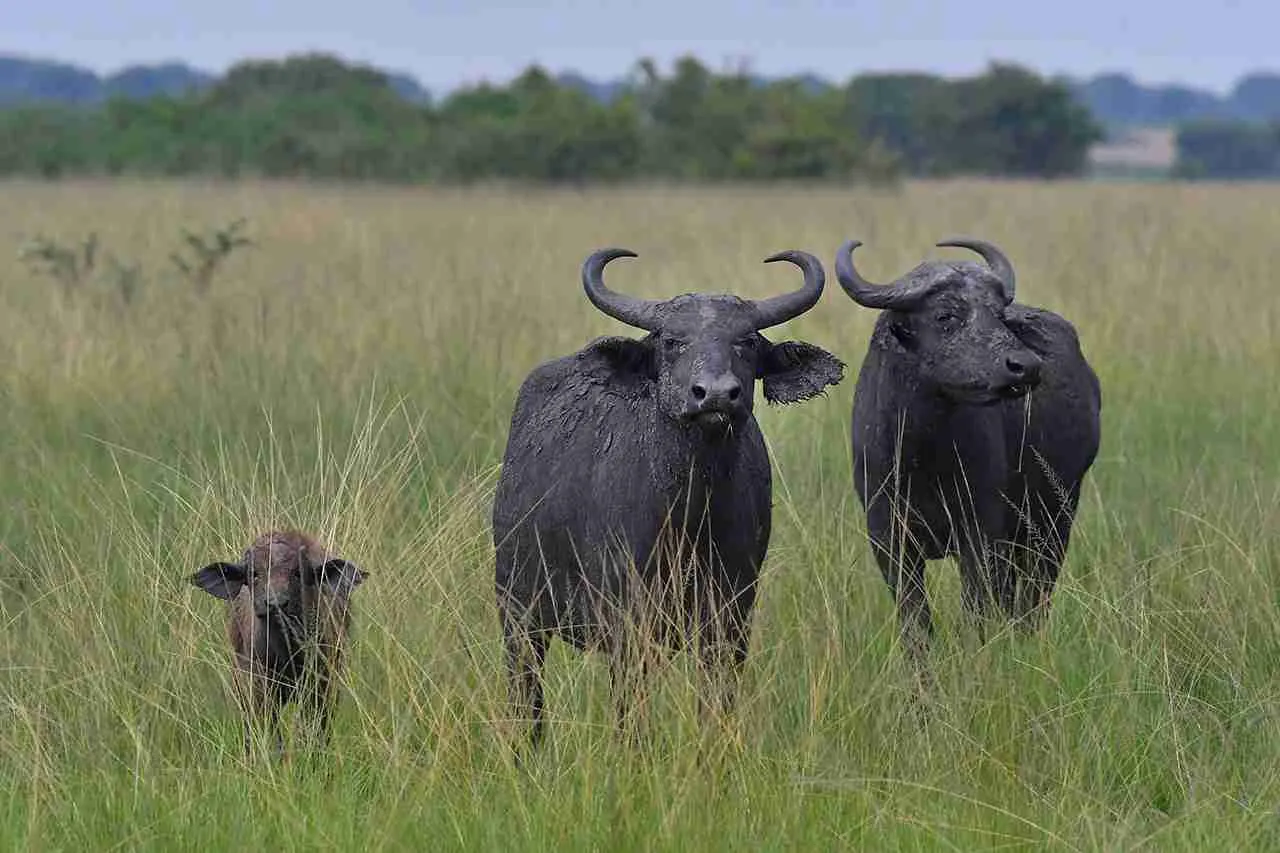The Mighty African Buffalo: 10 Intriguing Insights
10 Fascinating Facts about African Buffalo. The African buffalo, also known as the Cape buffalo, is a formidable and iconic species found in various regions of Africa. These massive herbivores are known for their distinctive appearance and unique behaviors. In this article, we will explore 10 fascinating facts about the African buffalo, shedding light on their biology, behavior, and ecological significance.
Species and Distribution:
The African buffalo belongs to the species (Syncerus caffer) and is divided into various subspecies, including the Cape buffalo and the forest buffalo. They are widespread across sub-Saharan Africa, inhabiting diverse ecosystems such as savannas, grasslands, and forests.
Distinctive Appearance: – 10 Fascinating Facts about African Buffalo
African buffaloes are characterized by their robust build, large curved horns, and dark, coarse fur. Their horns form a continuous shield across the forehead, known as a boss, which provides protection during battles.
Social Structure:
Buffaloes are highly social animals and live in herds that can range from a few individuals to several hundred. These herds are often led by a dominant female, and males may form smaller bachelor groups.
Territorial Behavior:
African buffaloes are territorial and will fiercely defend their home ranges from potential threats. They are known for their unpredictable behavior and can be aggressive, especially when provoked or during mating season.
Water-Dependent: – 10 Fascinating Facts about African Buffalo
Buffaloes are highly dependent on water and are often found near rivers and waterholes. They are strong swimmers and can cross rivers in search of fresh grazing areas, making them well-adapted to a variety of habitats.
Diet and Grazing Habits:
These herbivores are primarily grazers, feeding on a variety of grasses. Their diet is crucial for maintaining the balance of ecosystems, as they help control vegetation and contribute to nutrient cycling.
Predator Evasion:
Buffaloes are known for their formidable defense mechanisms against predators. When threatened, they form a protective circle with their young in the center, presenting a united front against potential attackers.
Disease Resilience: – 10 Fascinating Facts about African Buffalo
African buffaloes have developed a certain level of resistance to certain diseases, such as bovine tuberculosis and the cattle disease rinderpest. However, they can still serve as carriers of these diseases, posing challenges for conservation efforts and livestock management.
Mating and Reproduction:
Mating among buffaloes is not restricted to a specific season, and females give birth to a single calf after a gestation period of about 11 months. Calves are vulnerable to predation, and the protective behavior of the herd is crucial during this period.
Matriarchal Leadership:
Herds are often led by a dominant female, displaying a matriarchal hierarchy. These leaders possess knowledge of optimal grazing areas and water sources, guiding the herd to sustainably navigate their territories.
Remarks – 10 Fascinating Facts about African Buffalo
The African buffalo is a symbol of strength and resilience in the African wilderness. Its ecological importance, social dynamics, and unique adaptations make it a species worth studying and conserving. As human activities continue to impact their habitats, understanding and protecting these magnificent creatures become crucial for maintaining the biodiversity of African ecosystems.








